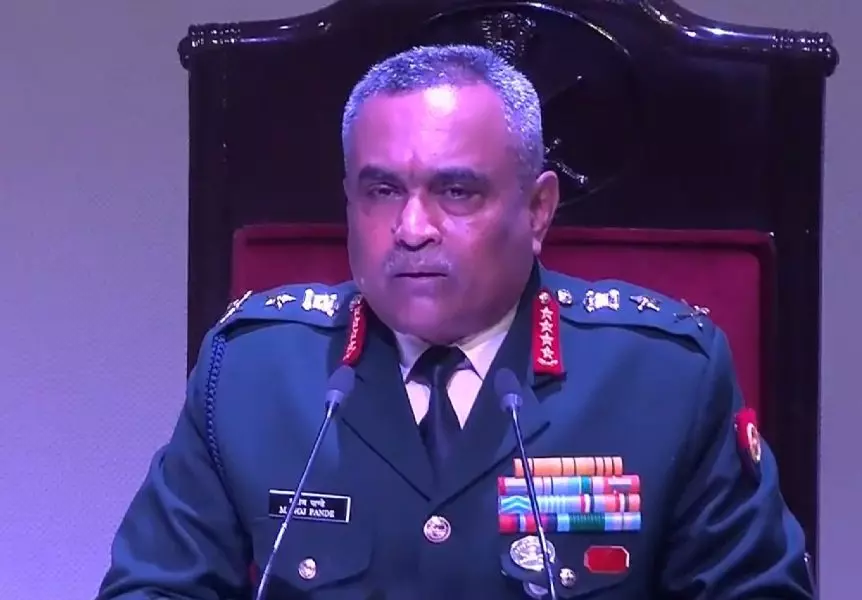
Scheme to hire Agniveers will ensure youthful profile of armed forces: Army chief

Pune, Dec 7 (PTI) Indian Army Chief Gen Manoj Pande on Thursday called the ‘Agnipath’ scheme a “path-breaking” manpower intake methodology and asserted that it will ensure the youthful profile of the armed forces.
Under the Agnipath scheme, which was introduced in 2022, soldiers are enrolled as Agniveers by the armed forces for four years. They can then go back to society and take up jobs in other sectors to pursue a career of their choice.
“In the human resource management domain, the introduction of the Agniveer (Agnipath) scheme has been a path-breaking manpower intake and management methodology. This will ensure the youthful profile and bring more technologically adapted and oriented soldiers into ranks and file,” said the Army chief.
Gen Pande was speaking at the convocation and scroll presentation ceremony at the College of Military Engineering in Pune.
He said the scheme also ensures that the “best of the best” are retained as core manpower of the armed forces.
Gen Pande said the integration of Agniveers into the units and subunits is the key as their assessment and retention in service is based entirely on merit.
“You all are going to be important stakeholders at the grassroots in your units. I want you to provide professional leadership and mentorship both as expected from a good sub-unit commander,” he said while addressing the graduate officers.
He said the Indian Army has embarked upon the path of transformation since last one year.
The need for the transformation has accrued four key drivers such as unprecedented trends in the geo-strategic landscape, the limitless potential of destructive technology, the changing character of war and profound changes in the socio-economic situation, he said.
“In order to address these imperatives to affect the changing design, we implemented a transformation road map a year ago. We have made good progress and good beginnings to ensure continued focus and impetus across all wide pillars of the transformation road map,” he said.
The general told them their engineering degrees will give them technical prowess to apply scientific principles to solve future problems.
"Develop analytical mind and inculcate practical level of thinking to find solutions to ground level situations and problems faced by the field formations. The fact that you would be executing most of your tasks in the face of an enemy entails proficiency under testing conditions. You will have to function in challenging conditions such as scarce resources, inhospitable terrains, extreme weather and limited working conditions," he said.
He advised the students to approach each task not just as engineers but as a problem solvers and innovators.
"The technological progression in multiple domains today, use of contemporary techniques and solutions in the realm of combat engineering must engage your attention. Your focus should extend beyond conventional methodologies, and incorporate new concepts and cutting edge digital engineering practices," he said.
He told them they must be proficient in leveraging advanced technologies such as carrying out surveys by drones, augmented and virtual reality and its usage to enhance the ability to simulate project scenarios with clarity.
New structural technologies and rapid construction methods have come to the fore in the construction landscape and these include precast construction, pre-engineering building, 3D printing and light gauge construction, he said.
So absorb current best practices and introduce them into your execution methodologies, he added.
In all three fields of combat engineering, Military Engineering Services (MES) and Border Roads Organisation (BRO), the image and reputation of the organisation largely depends on the quality of work and timely completion or execution, the COAS pointed out.
"As part of force restructuring and optimisation, we are reorganising our units to achieve improved and better combat efficiency. Our manpower optimisation endeavours stand across all arms and services with an intent to achieve optimal balance in the Army's teeth to tail ratio," General Pande said.
"We are pursuing new and niche technology into our war fighting systems. Technical thresholds, training, operational philosophy, tactics, etc have also been addressed. Our systems, processes and functions are being refined towards adopting best practices to become more outcome oriented," he said.
A total of 46 Army officers of Engineer Officers Degree Engineering (EODE) Course 125 and Technical Entry Scheme (TES) Course 40, including seven from friendly nations, successfully completed their courses at CME, Pune.
A total of 32 Army officers were awarded B.Tech degree in Civil Engineering, seven officers were awarded B.Tech degree in Electrical Engineering and seven officers in B.Tech Mechanical Engineering. PTI

